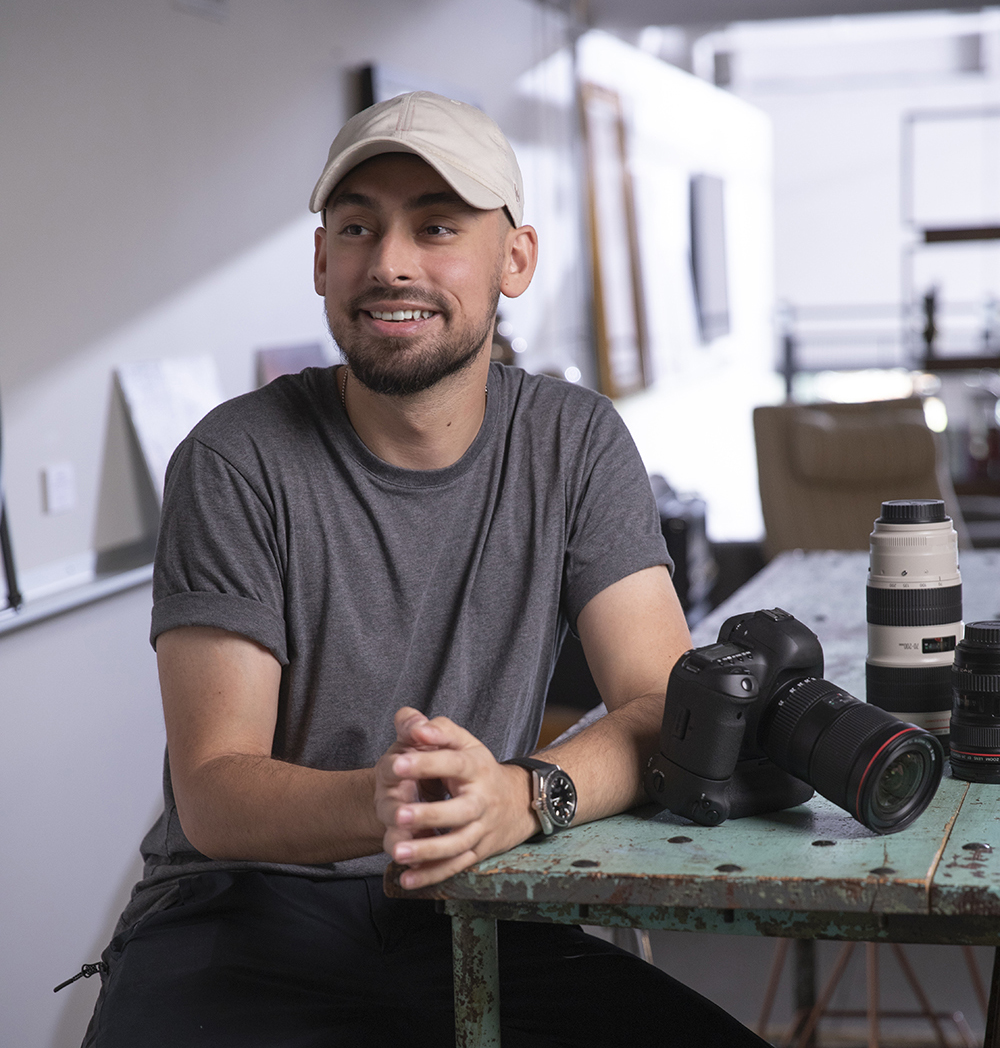Scotia iTRADE is here to let the multi-hyphenates and entrepreneurs of today’s world live on their own terms. Learn more about it here. Check out more stories on how creative consultant Amy Shio navigates financial confidence here, and Chef Brandon Olsen explains how he’s taken control of his own finances here.
Photographer / Trader / Creative Director
“My biggest financial concern is understanding what to do with my money.” — Tristan O’Brien, on Scotia iTRADE
The tale of the struggling artist is one as old as time, but in the Instagram age there’s a growing contingent of creatives that have seized opportunity for themselves. Tristan O’Brien is one of them. After failing photography in school two separate times, O’Brien never planned on a career in the field, but today has worked with giants like Nike, Canon, and the Toronto Raptors thanks to his sharp eye for detail and savvy use of social media. Here, the creative director shares his experiences on building his business and how he took control of his financial future by taking his first steps into self-directed investing.
You didn’t take the traditional path to success. Have you always been a self-starter or is that something that you’ve grown into?
I’ve always been a self-starter. Even when I was in high school, I had a couple of startups with my friends that involved everything from a clothing line to an online publication. I definitely think that getting into photography is what really ignited it in me and kicked me into gear. [I thought to myself,] “Okay, I really need to put a lot of effort into this. I need to push harder and take the initiative to reach out to clients. I need to put myself out there.” [Photography] was the first time for me where I was able to make things tangible.
As an artist and creative, what are some of the biggest challenges that you’ve come across while navigating your financial landscape?
A big issue for me was just trying to figure out how much I should charge. What was I worth? It’s a very daunting thing when you’re doing something that makes you money, and it slowly becomes your career, but you still don’t have a firm grasp on what the going rate is. I would have loved some information back then on rate cards, how to make one, and, overall, how to value myself.


When Scotiabank reached out to me to take part in the campaign, the first thing I said was, “I just want you to know that I’m the worst person when it comes to saving money.” But now I’m making a good amount of money doing what I do. My biggest financial concern is understanding what to do with my money. How do I save my money? How do I invest it wisely?
Since you’ve started using the iTRADE platform, what features have helped you become more comfortable with trading?
One thing I absolutely love is being able to have your actual account, and then a practice account tied to it. I love that feature because it’s something that I’ve always believed in with photography — that mistakes are the best things that can happen to you. Every time you fail, you’re going to learn. [Mistakes] propel you to get better at whatever it was that you just failed at. It’s more of a learning experience than a loss.
What kind of individuals do you think iTrade is optimal for?
I think it’s perfect for people like myself. It’s very empowering for younger people. I’m 28 now and I’ve never thought about investing, but this introduction has made me think this is something that I’ll definitely explore down the road. I’ve been recommending it to all of my friends.








